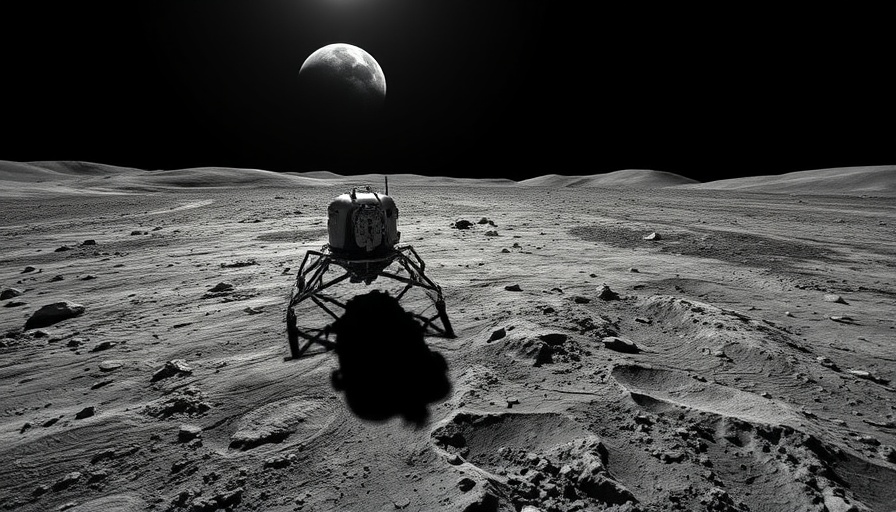
Historic Achievement: Blue Ghost’s Moon Landing
Firefly Aerospace's private lunar lander, Blue Ghost, has made history by becoming only the second private spacecraft to successfully touch down on the moon. This landmark event occurred on March 2, 2025, at the Mare Crisium region, famously known as the "Sea of Crises". As the video footage shows, Blue Ghost completed its descent with remarkable precision, highlighting the advancements in private space exploration.
The Road to the Moon: What Went Into This Mission?
The journey to the moon began with a launch from NASA’s Kennedy Space Center on January 15, where Blue Ghost carried ten payloads for NASA's Commercial Lunar Payload Services (CLPS) program. These instruments aim to prepare for future human exploration by collecting valuable data about lunar conditions. Notably, the mission not only succeeded in landing but also demonstrated crucial scientific functions such as lunar dust interaction and navigation signal tracking from over a quarter-million miles away.
Seeing the Moon Through New Eyes: Blue Ghost's Footage
A captivating part of Blue Ghost’s mission is the stunning visuals captured during its lunar descent. The lander's cameras recorded the lunar surface as it approached, and the first image sent back depicted a panorama of craters and dust. These visuals are not merely aesthetic; they provide critical data on lunar terrain which enhances our understanding of the moon’s geological history.
What’s Next for Blue Ghost?
Now that it has landed, Blue Ghost will operate for one lunar day, roughly equivalent to 14 Earth days. Throughout this period, the lander will perform various scientific tasks, including collecting lunar soil samples and conducting environmental monitoring experiments. This data will lay the groundwork for upcoming missions, especially as NASA eyes plans for human exploration under its Artemis program.
A Wave of Private Space Innovation
The success of Blue Ghost stands as a key indicator of the burgeoning private space industry. Multiple companies are currently developing lunar landers, signaling a vibrant future for lunar exploration. For instance, Intuitive Machines and the Japan-based company ispace are gearing up for their own lunar endeavors. This collaborative effort among private entities aims to accelerate our return to the moon.
The Broader Implications of Private Lunar Exploration
As seen with Blue Ghost's successful landing, the integration of commercial technologies in space exploration not only democratizes access to space but also enhances technological innovation. Such endeavors promise not only scientific returns but also potential economic benefits, fostering a sustainable lunar economy and paving the way for future expeditions to Mars and beyond.
Public Engagement in Space Exploration
The excitement surrounding Blue Ghost's landing inspires a new generation interested in space science and technology. Firefly’s CEO, Jason Kim, emphasized the importance of this achievement in encouraging youth to pursue careers in fields related to science, technology, engineering, and mathematics (STEM).
The mission's success, underscored by the collaboration between NASA and American companies, demonstrates that the future of space exploration is increasingly rooted in public-private partnerships, ultimately aiming to benefit all of humanity.
While we celebrate this historic landing, the sky is no longer the limit; as we venture further into space, the understanding we gain will surely lead to incredible new frontiers for humanity.
 Add Row
Add Row  Add
Add 




Write A Comment